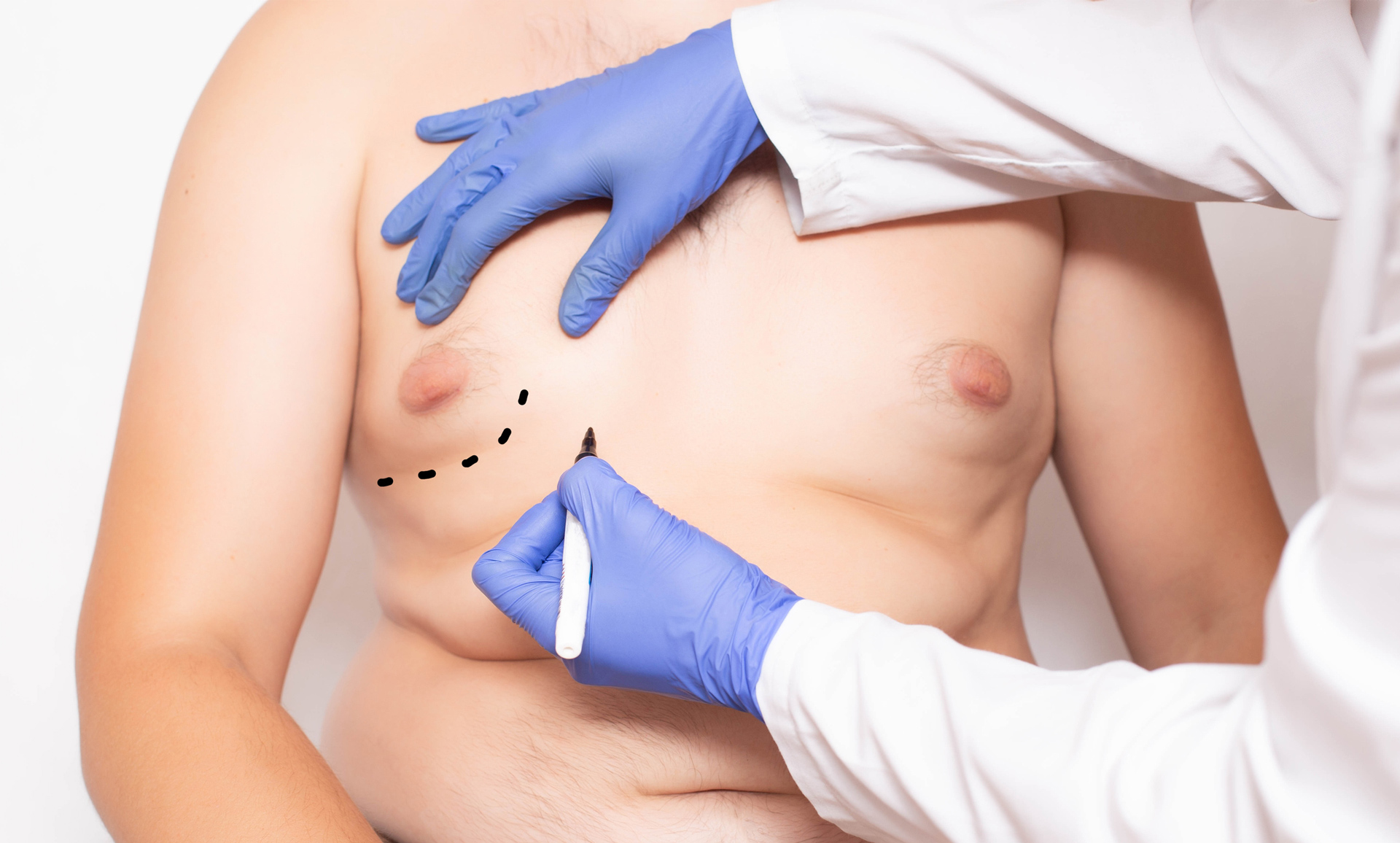Gynecomastia
Gynecomastia means “enlarged male breasts”. This condition can be uni- of bilateral and it is often caused by a hormonal imbalance. Generally, gynecomastia is a benign condition, however, it can become malignant. Moreover, this condition often has an important psychological impact.

GYNECOMASTIA: SURGICAL TREATMENT
There are 3 types of gynecomastia:
- Pure gynecomastia = increase in the volume of the breast tissue gland. In this case, the “Webster incision” is indicated. A little intra-areolar incision is placed in the inferior hemisphere which allows removal of the breast tissue gland. The wound is closed with medical glue and a bandage is wrapped around the thorax for one week to prevent internal bleedings.
- Pseudogynecomastia = increase in the volume of fat tissue. In this case, a liposculpture is indicated. Through a very small areolar incision a liquid (KLEIN solution) is injected to make the fat cells more soluble. After that, the excess fat cells are removed with a small aspirating tube. The wound is closed with medical glue and a bandage is wrapped around the thorax for one week.
- Mixed gynecomastia = increase in the volume of the breast tissue gland and fat tissue. In this case the breast tissue gland is removed and through the same incision, a liposculpture is performed. The wound is closed the same way as in the other cases and the patient also needs to wear a bandage around the thorax for one week.
GYNECOMASTIA: HOSPITALIZATION
Our cosmetic surgery and aesthetic surgery in our clinic is performed under sedation. This means that the patient sleeps throughout the whole gynecomastia intervention (like with a general anaesthesia), but is not intubated, thus preventing every possible risk associated with a general anaesthesia. The intervention takes about 1 hour by the plastic surgeon, after which the patient stays in his room to rest for another hour and can then leave the clinic.
POST-TREATMENT FOR GYNECOMASTIA
When you leave the hospital, you will receive painkillers (paracetamol) in case you experience some pain. After a massive resection, a drain is placed for 24 hours to remove excess blood en liquids. The patient needs to wear a bandage around the thorax for 2 weeks to reduce the swelling. Ice applications are recommended for a couple of days. A check-up is planned after 2 weeks en after 3 months.
